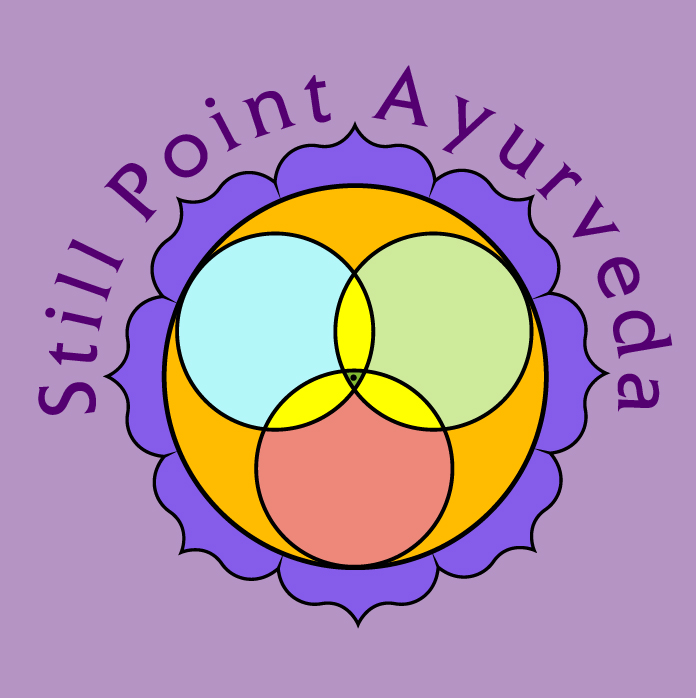There is a general rule that we should drink half our body weight in ounces of water daily, and it is said in the western system of medicine that an expected eight glasses of water a day is needed for everyone. Ayurveda does not agree with the western system approach of one-size-fits-all. Ayurveda does suggest mainly drinking when you are thirsty. If there is more sweating involved, then water intake should increase to match it. If we are drinking more than the body needs, then we will urinate it out. It is also important to note that the body actually consists of predominantly water/fluid which consists of various forms of water, salt, and other nutrients/minerals such as plasma, synovial fluid, cerebrospinal fluid, tears, saliva, and even sweat.
Water is essential, of course, but not in excess. I explain it to my patients like this “if I wanted to wash a wooden table, I would use water. But, if I keep washing the table, eventually the surface will strip, dry, and eventually crumble. Yet, if I wanted to make sure the surface endured and was well lubricated/hydrated, I would use a substance, in the case of wood, a varnish of sorts.” When it comes to the body, drinking too much water can cause the body to perpetually flush which can be depleting. Water flushes the body. It is an anti-inflammatory because it moves through the cells and removes toxins which add to fermentation and accumulation BUT water doesn’t actually stay in the cell for long. Osmosis keeps it moving, naturally. In Ayurveda, cold water is considered the “poison of life” and warm water is considered the “nectar of life.” If I want to remove grease from a dish, I would use hot water and soap. Hot water is like metabolism and the soap is like the emulsification process involved with the liver/gall bladder to break down the fat molecules in order to increase the surface area and allow the lipids to be properly metabolized and/or eliminated accordingly.
The way to really nourish the body/cells, while purification is needed in a balanced way, is to have natural gatorades. I learned of this a few years ago and have seen its amazing benefits as I’ve shared these teachings with others. I have had many patients come and say that they were waking up to pee a lot during at night and by simply adjusting their water : fluid intake daily, along with having them stop drinking anything at least an hour before bed, they would have increased sleep due to less need of having to wake up to pee. Disrupted sleep is a whole other cycle that can cause other imbalances, that we can discuss another time and/or you can get a preview by reading my SLEEP article. Increased water can lead to increased urinary output and increased urinary output increases sensitivity in the urinary system which can cause malabsorption and even depletion. Even making the necessary corrections slows down how much the frequency of urination occurs during the day. It’s amazing! Such simple adjustments = such increases in and towards optimal health.
It is important to note that the changes can happen within a few days to a few weeks, usually., and as long as other factors are also in place with regard to diet and lifestyle.
Anyways, here are a few recipes. Natural gatorades support the understanding of electrolytes which is key to what I am sharing here. There is a balance between the sodium and potassium in the body. Therefore, it is only plausible that what comes into the body should also share this relationship.
1) This recipe I learned from a great teacher at CCA. It is called Limeade. The recipe is 1/4 lime squeezed (lemon is fine), 1/8 tsp. of sea salt, 1 tbs. of maple syrup, and 14-16oz. of filtered water. Shake it and drink. This has been my number one recommendation whenever I discuss hydration with anyone and have seen significant changes subtle and overt, occur. But I’m not guaranteeing it for everyone.
2) Coconut water. Taken plainly is fine. For minor adjustments, Vata predominant individuals can add a pinch of cumin or cardamom powder, Pitta predominant individuals can add a pinch of coriander, cardamom or fennel, and Kapha predominant individuals can add cardamom or ginger powder.
3) Juice to Water combo. 1 part pure juice (like an orange or mango, etc.) to 3-4 parts water, and a pinch of sea salt. Shake and enjoy.
4) Emergen-C. Only in “emergencies” or when I don’t have access to the three above, that I carry Emergen-C packets with me and add one to water and drink accordingly. It may not be as natural as the ones mentioned above but it is better than actual Gatorade or even Vitamin Water.
DISCLAIMER: This information is meant for educational purposes only and not considered medical advice. Any changes in lifestyle should be reviewed by a qualified practitioner and/or primary care physician if you are currently under their care for specific conditions.

